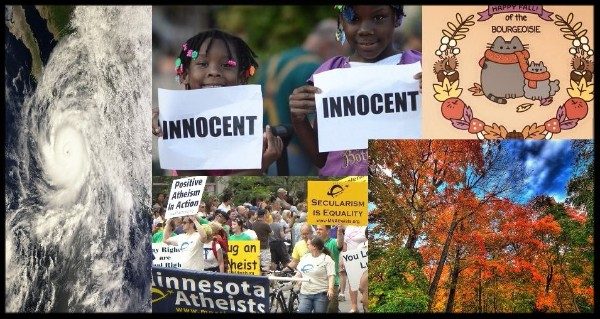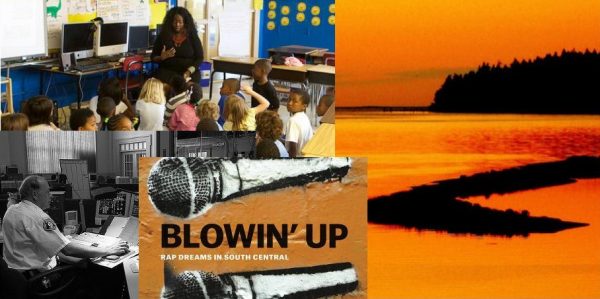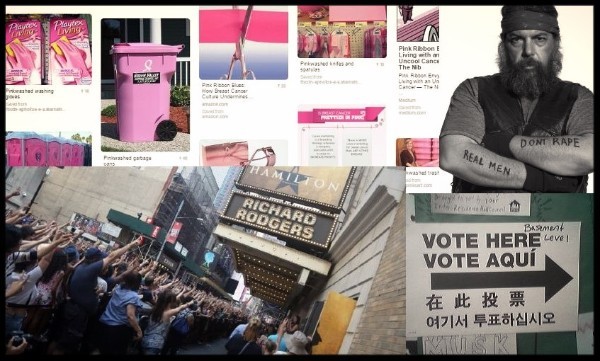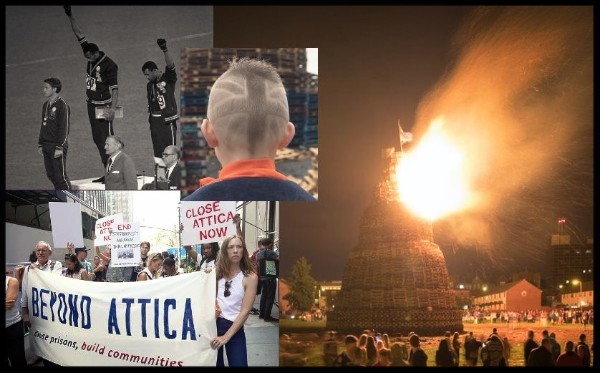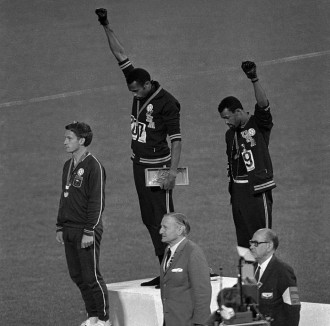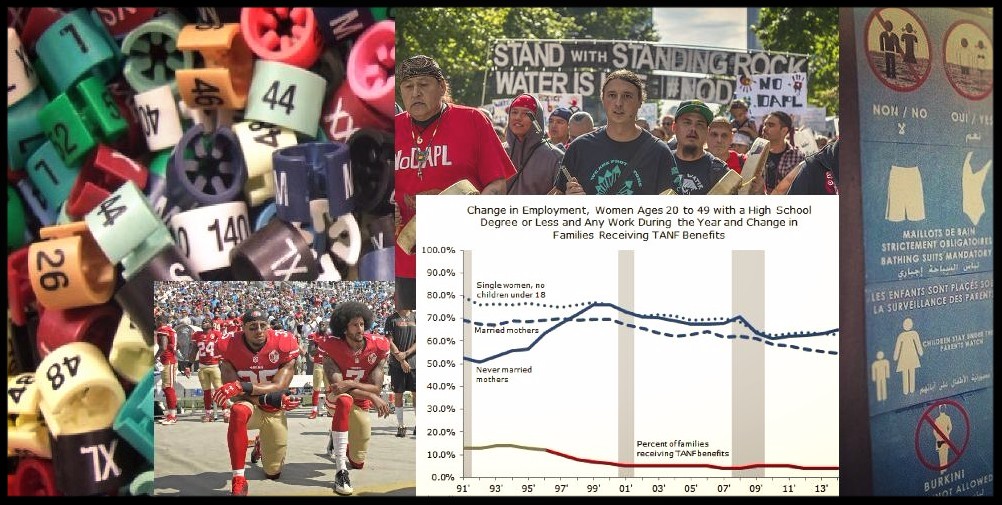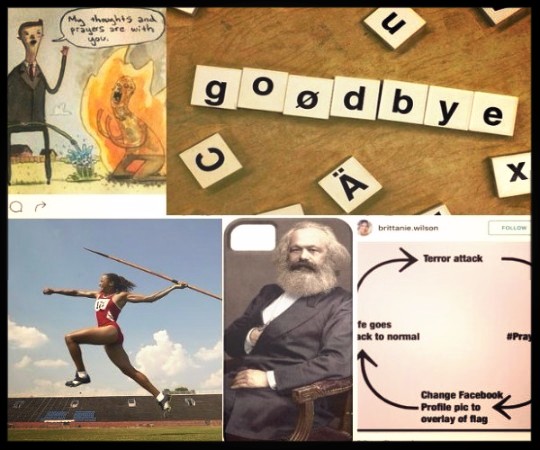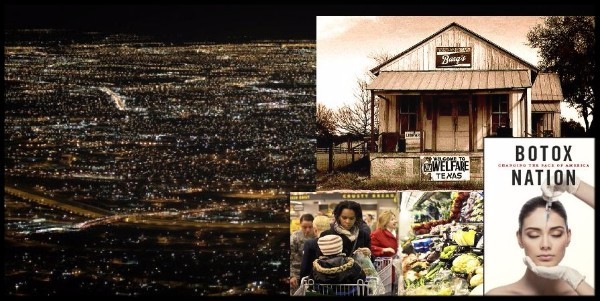Saturday Night Live has been having great fun with the presidential campaigns and debates all fall, with Alec Baldwin and Kate McKinnon headlining in the roles of Trump and Clinton. These skits have been entertaining to be sure, but they haven’t–at least in my opinion–plumbed the depths of social significance in the way that great, memorable, and truly meaningful comedy often achieves. Perhaps it is the source material. In any case, there was a bit this past week that I believe did achieve something quite powerful and sociologically insightful, even while being outrageously hilarious. I’m talking about the Black Jeopardy skit.
“Black Jeopardy” has been something of a recurring bit on the show. The concept is a play off of the quiz show that Alex Trebec has made famous where contestants must provide the questions that go along with various facts about culture, history, and science. In the SNL version of the game, the categories and questions are all based upon knowledge and information associated with black culture and/or unique in African American communities, and typically one of the three contestants–usually someone who is white–has little or no knowledge of any of this. The running gag is how obvious the answers and questions are for black contestants as opposed to the fish-out-of-water, racial other. What is both funny and revealing, then, are both the unique characteristics and distinctive knowledge of black culture and community (even the categories are often pretty funny but only if you have some knowledge of the culture) as well as what it is like to be a complete outsider. In short, Black Jeopardy is an almost straight-up inversion (and take down) of white culture and privilege.
In this week’s installment, the SNL crew inserted Tom Hanks into the mix. He plays an earnest if uncomfortable white, working-class contestant. The results were not only laugh-out-loud hilarious, but also revealed points of agreement–ranging from distrust of the government and anyone in power, to taking pride in thriftiness to a dislike of thin women–between members of the black community and erstwhile white Trump supporters. The unexpected points of agreement were the key to both the humor and the sociological insight. Such points of commonality are almost never realized or appreciated in our currently polarized, black versus white racial-political climate. The skit not only brought them to the fore, they made them funny.
You probably need to watch it for yourself to fully appreciate my point, and if you haven’t yet seen it, here’s a link.
But just to help underscore the brilliance of the concept and execution (and with a little help from my research assistant and TSP board member, Sarah Catherine Billups), here’s a condensed narrative of some of the best moments in the skit.
The Skit: Black Jeopardy with a Trump Player
“Whaddup, whaddup, whaddup! Welcome to Black Jeopardy—the only TV game show where the audience is in church clothes,” host Darnell Hayes (cast member Kenan Thompson) booms before introducing the contestants: Keely (Sasheer Zamata), Shanice (Leslie Jones), and Doug, a white guy sporting a “Make American Great Again” cap. One of these things is not like the other. Doug, played by guest host Tom Hanks, looks clearly out of place with his red cap, American flag and eagle t-shit under his blue denim work shirt and white goatee. All he’s missing is a shotgun and a Budweiser.
“Doug? Are you sure you’re ready to play Black Jeopardy?” Darnel asks with worry pushing his eyebrows to the ceiling.
“They told me a fella could win some money so let’s win me some money, GIT ‘R DONE,” Doug/Hanks explains kind of quietly.
The audience roars with laughter at this fish-out-of-water-fella as Darnell shrugs and then goes on to introduce the categories “Big Girls,” “You Better,” “Mm I don’t know,” “I’m Gonna Pray on This,” “They Out Here Saying,” and “White People.”
Keely and Shanice hit their buzzers with lightning speed to correctly answer the first few questions–which, as is the usual bit for this skit, plays off of the knowledge and experiences that are supposedly unique to the black community. When Doug nods his head in agreement to an answer and shares that he plays Monopoly Millionaires Club every week too, Darnell brushes him off.
Much to everyone’s surprise, however, Doug buzzes to the answer to the prompt: “They out here saying: the new iPhone wants your thumbprint ‘for your protection.’” He responds, a bit hesitantly, “No no, I don’t think so. That’s how they get’cha.”
“YES!…YES! That’s it!” Darnell points to him in shock. Did this white guy really just answer correctly?
Keely purses her lips, thinking for a second before nodding in agreement, “Yep. I don’t trust that.”
“Me either,” Shanice joins in. Both black women turn and look at Doug, fascinated but still a little cautious. “I read that goes straight to the government,” he says matter-of-factly.
“Yeah, not bad dog. The, the board is yours,” Darnell announces, his eyes still wide with newfound curiosity about this white guy in a bright red Trump hat.
Keely chooses the category “They Out Here Sayin” for $800: “They out here sayin’ that every vote counts.” This time, Doug buzzes in a bit more quickly. “What is ‘oh come on, they already decided that weeks ago–who’s gonna win even before it happens.”
“YES! YES! YES! YES!” Darnell shouts in excitement,” elaborating further himself, “The Illuminati figured that out months ago! That’s another one for Doug!” Is this really happening? Is Doug actually getting answers correct? The audience laughs as Doug says with new confidence, “Okay, we’re doin’ it.”
Next question: “The mechanic says you owe $250 for new brake lines.”
Doug rings in again! “What is ‘you better go to the dude in my neighborhood who’ll fix anything for $40.’”
“Oh, you know Cecil?!” Darnell asks as if Doug is a long lost cousin.
“Yeah, yeah. My Cecil’s name is Jim and he fixed my refrigerator, my air conditioner, and my cat,” Doug replies with pride.
“Yeah, everybody’s got a guy,” replies Darnell. “Wooo, you all right, Doug.” The audience applauds almost politely, with genuine appreciation.
Next, Doug selects the category “Big Girls” for $200. “Skinny girls can do this for you.”
“Doug?”
“What is ‘not a damn thing.”
This time the audience erupts in wild hoots and hollers as Darnell exclaims, “You damn right!”
“Yes! Yes!” Keely and Shanice agree. Shanice even gives him a high five. Both the women are smiling and nodding vigorously at this point, no longer looking at Doug like he’s a two-headed giraffe in the zoo.
“My wife—she’s a sturdy girl,” Doug explains.
“That is my MAN right there!” Shanice approves.
“Go Doug, Go Doug, Go Doug!” The host and the other contestants sing and dance to cheer for this white man getting the right answer, again!
As the fictional contest draws to a close, Darnell crosses his hand over his heart and says, “Doug. I got to say, it’s been a pleasure,”
“Well, right back at ya my buh-rau-thuh,” Doug replies in a somewhat uncomfortable attempt to return the complement and stay on common ground.
Now it’s time for the Final Jeopardy. What else does Doug know? Can he really win this thing? Is it possible that his knowledge and understanding is really on par with that of the black audience, host, and contestants? The audience is ready to find out, and waits for the final category to be revealed.
“Lives that Matter.”
“Oooooh” the audience grimaces and hesitates as Keely’s and Shanice’s eyes shoot daggers in Doug’s direction. Darnell smiles biting his lower lip, shrugs his shoulders, and shakes his head, “Well, it was good while it lasted, Doug.”
“Hey, I got lots to say about this—,“ Doug insists.
“I’m sure you do!” Darnell says. “When we come back, we gonna play the National Anthem just to see what the hell happens. We’ll be right back!”
As the screen fades out, we see Doug talking and gesturing wildly with his hands as Shanice watches, perplexed and Keely slowly wags her finger.
Final Analysis: There are other great moments in the skit of both unexpected commonality and obvious, if amusing, cross-racial tension that we’ve glossed over here. But the insights about race relations and American culture that I see so brilliantly, entertainingly represented and revealed in SNL’s Black Jeopardy can be easily summarized: the initial skepticism and distrust that defines so many inter-racial interactions in our culture; the points of common understanding about culture and society that may actually exist under the surface for some of us; and yet, ultimately, the existence of issues where there is almost certainly going to be a huge disconnect and major disagreements. Great concept. Brilliant execution. SNL and comedy at its sociological best.

